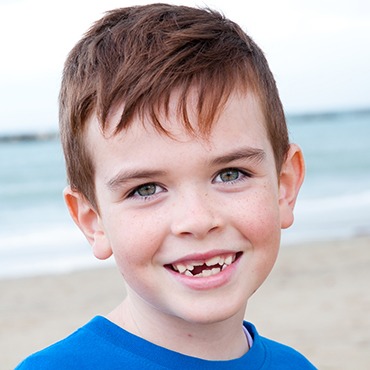Tooth Eruption - Midland, TX
The Special Beginnings Of Your Child's Smile
 Here at Midland Kid’s Dentist, many curious parents have questions about their child’s growing teeth. When should the first baby tooth arrive? When should I expect their baby teeth to fall out? By what age should my child have all of their teeth? Dr. Vuppala and the rest of our team are happy to answer these questions for you, and you can find all the information you need to know about tooth eruption below as well! If you’re ready to schedule an appointment for your special son or daughter, please contact our dental office here in Midland, TX.
Here at Midland Kid’s Dentist, many curious parents have questions about their child’s growing teeth. When should the first baby tooth arrive? When should I expect their baby teeth to fall out? By what age should my child have all of their teeth? Dr. Vuppala and the rest of our team are happy to answer these questions for you, and you can find all the information you need to know about tooth eruption below as well! If you’re ready to schedule an appointment for your special son or daughter, please contact our dental office here in Midland, TX.
Primary Teeth

Primary teeth (also known as “baby” teeth) are likely to fully emerge by the time the patient is two. Usually, the lower central incisors (the two teeth right in the front of the mouth on the bottom arch) make an appearance first, quickly followed by the upper central incisors. From there, parents can expect teeth to arrive in sets of four on both sides of these front teeth. If your child’s teeth seem to be developing and erupting in a strange arrangement, don’t panic – this is normal, and our doctors will be sure to let you know if there’s a problem!
Permanent Teeth

Our young patients typically start losing their “baby” teeth anywhere between the ages of six to ten. At this time, the permanent teeth will quickly emerge to take their place. Like the first time, the lower central incisors are likely to show up first, but this time, they’re followed by the first molars (back teeth that you use to chew and grind up food). Then, the upper central incisors and lower lateral incisors (the teeth that are situated on either side of the “front” teeth) are typically next, followed by the second molars and the upper lateral incisors. When your son or daughter is between the ages of 17-25, their wisdom teeth (third molars) will finally show up, completing their adult smile.
Tooth Eruption FAQs
How Do I Know If There’s Something Wrong with My Child’s Permanent Teeth Eruption?
In most cases, teeth erupt in pairs in the same jaw. For example, the two front bottom teeth should erupt at a similar time. If six months have passed and the erupted tooth’s adjacent tooth hasn’t started to make an appearance, this is worth checking into to make sure nothing is wrong. X-rays can be taken to see exactly what is going on and if their dentist needs to interfere.
Why Are My Child’s New Lower Teeth Erupting Behind Their Baby Teeth?
This is a common question asked. Seeing two rows of teeth, sometimes called “shark teeth” can trigger concern for parents. This is actually the normal position of the permanent lower incisors. They are situated behind the primary teeth. However, they will drift forward once there is space. The primary teeth don’t usually need to be extracted unless the adult incisors have erupted to nearly the same height as the baby teeth.
Why Are My Child’s Permanent Teeth Yellow and Ridged?
When compared to baby teeth, permanent teeth can initially appear more yellow and have irregular edges. This is because the structure of the tooth is different. The permanent teeth’s outer layer, the enamel, is more translucent, so the yellow dentin layer can show through. On the other hand, baby teeth are a lot more opaque, so the teeth appear to be a milky white color. As for the jagged bumps, these are called “mamelons” and are caused by the formation of the teeth. These bumps are pretty thin and uneven, so they will likely wear down and have a flatter edge over time.
Why Are My Child’s Adult Teeth So Crooked?
When the permanent teeth are erupting, the jaw is still developing, so kids with smaller jaws may not have enough space for their teeth to be perfectly aligned. Also, when their mouths’ contain a mixture of primary and adult teeth, their smile can appear uneven for a time. It’s important that you take them to their regular checkups every six months so their dental team can keep an eye on the development of their teeth. If misalignment issues develop, they can be addressed in their tracks, setting the future of their smile up for success!
